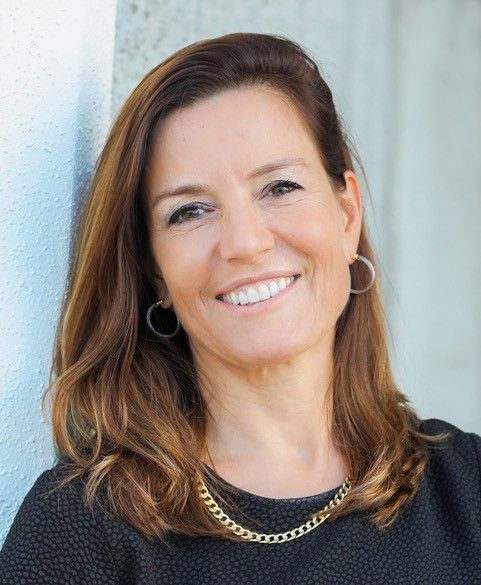The Missing Puzzle Pieces to Trial Representativeness
Truly moving the needle in clinical trial diversity comes down to embracing two fundamental pieces of the DE&I puzzle.

Technology is a double-edged sword when it comes to increasing representativeness in clinical trials. When fully decentralized and hybrid decentralized clinical trials (DCTs) grew in popularity, many industry leaders had high hopes that digital technologies would allow remote data entry, alleviating geographic and logistical hurdles to participation. Patient populations, including underrepresented patients, would finally have less access burdens to participate in trials. But … Houston, there’s a problem.
While there has been recent progress—for instance, leadership is prioritizing diversity initiatives, and the Omnibus Act authorized the FDA to make it mandatory for diversity action plans on most new clinical trials—the needle hasn’t moved on diversity in research as fast or as substantially as promised. At least two fundamental pieces of the diversity, equity, and inclusion (DE&I) puzzle are still missing: lack of connectivity and lack of evidence.
Bridge the digital divide
Many of these same populations live in broadband deserts, regions with little-to-no access to high-speed (or any speed) internet. No internet, no DCT. To participate in digital or decentralized trials, patients need access to high-speed internet, computers, and smartphones. Therein lies the rub.
The latest Broadband Report1 shows that the gap between Americans with and without broadband service (at least 25/3 Mbps) at the end of 2019 was narrowing. In 2020, the Trump administration established the Emergency Broadband Benefit (EBB) to enable internet connectivity to more Americans sequestered to their homes during the COVID-19 pandemic. In late 2021, Congress transitioned EBB into the Affordable Connectivity Program (ACP), a long-term, $14 billion program. Most recently, the Biden administration released $73 million in ACP grants to help more Americans connect.
Despite the progress, at least 42 million Americans, or 12% of the population, reportedly do not have access to broadband service at threshold speeds—and the vast proportion are from low-income and rural households. One study2 found that US counties with the highest broadband access had the lowest barriers to healthcare access, while rural counties with low or no broadband access, including about 14 million rural Americans and more than one million living on tribal lands, had the highest barriers to healthcare access.
“The study underscores the need for policymakers and healthcare leaders to prioritize efforts to improve broadband infrastructure, digital literacy, and affordability to ensure equitable access to healthcare services for all patients,” said Diego Cuadros, University of Cincinnati epidemiologist, and study co-author. We need equal access to broadband service the same way we have access to water and electricity—these have become utilitarian and essential to how we live.
Measure twice, cut once
As a physician and a former executive director for the Clinical Trials Transformation Initiative (CTTI), I strongly believe in the paramount importance of evidence. At Medable, I’m literally in the business of understanding the impact of advanced technologies in clinical trials. Without hard evidence that something works (or does not work) or where it works best, everything grinds to a halt.
To date, we have not properly measured decentralization and how it has impacted access to trials. The industry has only surmised that digital naturally increases patient access and, therefore, increases population representation in research, but speculation is not good enough. Part of the challenge in going beyond hypotheses, though, is the great variability in DCTs.
Today, decentralization is part of nearly every clinical trial—some are fully decentralized while many more leverage different elements of decentralization such as electronic clinical outcomes assessments (eCOAs) or electronic informed consents (eICs). As a result, it is difficult to isolate the variable “diversity” and directly correlate it with a single decentralized element, such as “eCOA.” In addition, we do not yet have enough historical data on enough hybrid DCTs to reach a consensus on individual variables.
But we will, as this part of my mission.
Another impediment to proper measurement of DCTs’ impact on diversity is the different criteria/definition for diversity in clinical research depending on the government office. The Office of Management and Budget (OMB) has one set of diversity standards, and the FDA has another, different and outdated set of standards. And the Multi-Regional Clinical Trials Center of Brigham and Women’s Hospital and Harvard published newer criteria for diversity standards than either the OMB or FDA. Now, sponsors must create diversity action plans based on the dated FDA standards while other trial sponsors are going beyond those and turning to the MRCT criteria.
This alphabet soup of regulatory standards is a big problem. Population representation in clinical trials, specifically in relationship to decentralization of trials, is hard to measure accurately. It’s like comparing apples to oranges to bananas. Yet, it is critical to move the needle. Only when we understand the real-life implications of decentralization and digital on population representation in clinical research will DCTs become endorsed fully.
Pamela Tenaerts, MD, Chief Scientific Officer, Medable
References
1. FCC Annual Broadband Report Shows Digital Divide Is Rapidly Closing. Federal Communications Commission. January 19, 2021. https://www.fcc.gov/document/fcc-annual-broadband-report-shows-digital-divide-rapidly-closing
2. Cuadros, D.F.; Moreno, C.M.; Miller, F.D.; Omori, R.; MacKinnon, N.J. Assessing Access to Digital Services in Healthcare–Underserved Communities in the United States: A Cross-Sectional Study. MCP: Digital Health. 2023. 1 (3), 217-225. https://www.sciencedirect.com/science/article/pii/S2949761223000305

Using Patient Reported Outcomes in Dermatology Trials
April 25th 2024In part 3 of this video interview with ACT editor Andy Studna, Melissa Mooney, director, eCOA sales engineering, IQVIA sheds light on the unique challenges of dermatology trials and how clinical outcome assessments can be implemented in them.